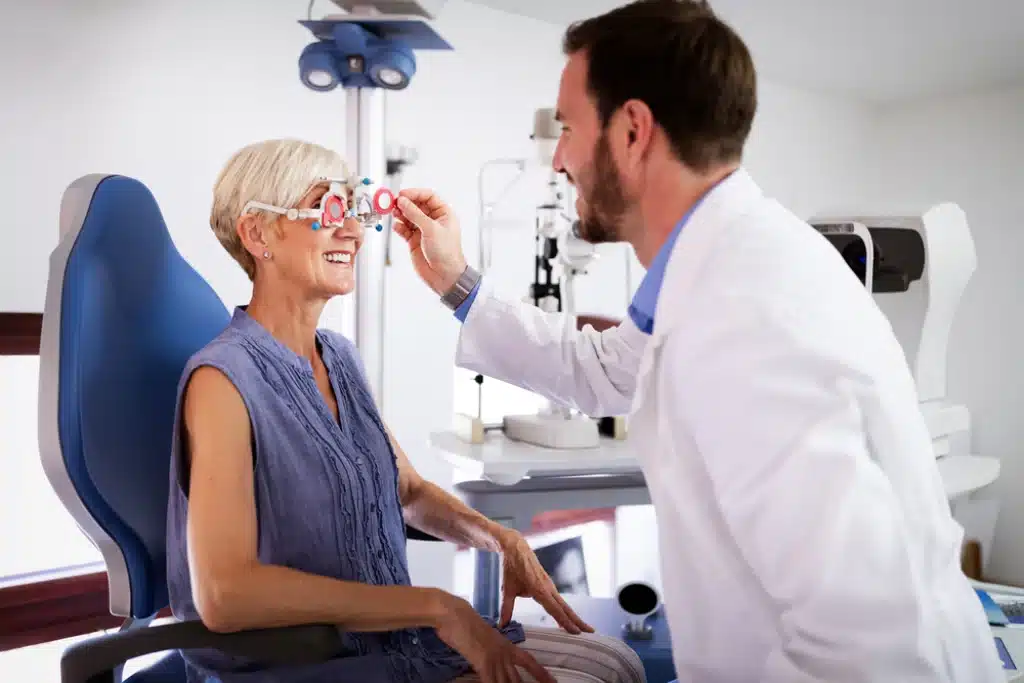Medically Reviewed by: Edward C. Wade, M.D., F.A.C.S.
Understanding LASIK Surgery
Approximately 50 percent of Americans suffer from visual impairment of some type. Astigmatism, nearsightedness and farsightedness are examples of vision problems and may begin in youth or later in life. Glasses are the most common device used to correct poor vision, but contact lenses have also gained considerable popularity over the last four decades. LASIK eye surgery is a third option, and one that provides numerous advantages not associated with glasses or contacts. However, it is important to make sure that the surgery is completed by an experienced LASIK surgeon.
Procedure
There are several variations of the procedure, some of which are more advanced than others. The technique preferred varies somewhat from one LASIK surgeon to the next. Therefore, prospective patients are wise to discuss the different alternatives with the surgeon of their choice. However, the basic steps involved in the surgery are similar, regardless of which variation a person and his or her ophthalmologist ultimately choose.
Application of Numbing Drops
First, the surgeon applies numbing drops to the eyes. He or she then gently pulls down the lower eye lid to administer the initial dose of drops. Extra drops may be added later, if the doctor feels this is necessary. In most cases, it takes only 10 to 15 minutes for the drops to become effective. Although patients feel the presence of the device that holds the lid in an open position, experiencing pain is very rare.
Flap Creation
The surgeon’s next step is to create a flap using a blade or laser. When the flap, which is used to make the visual correction, is lifted, the patient’s vision blurs and dims and this is entirely normal.
Reshaping
Laser reshaping, the phase with which most individuals are familiar, is the point at which the surgeon will reshape the cornea’s stroma layer to ultimately correct the person’s sight. The cells removed depend on the prescription needed for each patient, and varies considerably from one individual to the next.
In most cases, patients are instructed to look at a green or red light while special ocular software tracks their eye movement. This is to ensure appropriate precision during the procedure. Patients may notice an odor and hear a clicking noise, both of which are normal and to be expected.
Following the reshaping phase, the surgeon replaces the flap he or she created with special instruments. More eye drops may be applied at this point, and the healing process begins at once. In most instances, the surgery takes 30 minutes or less.
Regardless of the specific technique used by the surgeon, the success rate of LASIK surgery has remained very high since its inception, and it is not associated with a substantial number of side effects or post surgery complications. Improvement in vision is virtually instant, but individuals are typically given very specific post-op instructions and a follow-up visit is scheduled for the morning following the surgery to evaluate the outcome and ensure it was successful. Those who believe they may benefit from surgical vision correction should discuss the pros and cons of LASIK eye surgery with a qualified and experienced ophthalmologist.
Financing Options Available
Apply today to find a financing option that meets your needs.
Our Locations
Houston/Bellaire
6565 W. Loop S., Suite 650Bellaire, TX 77401
Medical Office:
713-797-1010
Medical Fax:
713-357-7276
LASIK/Near Vision:
Office: 713-395-1515
Fax: 713-357-7278
Pasadena
4415 Crenshaw RoadPasadena, TX 77504
Medical Office:
281-977-8800
Medical Fax:
281-977-8877
Sugar Land
15200 S.W. Freeway, Suite 130Sugar Land, TX 77478
Medical Office:
281-277-1010
Medical Fax:
281-277-4504
Clear Lake
455 E. Medical Center Blvd., Suite 110Webster, TX 77598
Medical Office:
281-332-1397
Medical Fax:
281-282-9152
Katy
Greenhouse Medical Plaza2051 Greenhouse Road, Suite 110
Houston, TX 77084
Medical Office:
346-547-7070
Medical Fax:
281-214-2971
The Woodlands/Conroe
100 Medical Center Blvd., Suite 118Conroe, TX 77304
Medical Office:
936-647-1610
Medical Fax:
936-647-1620


